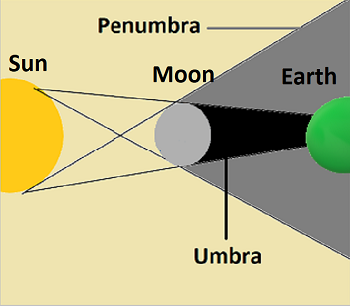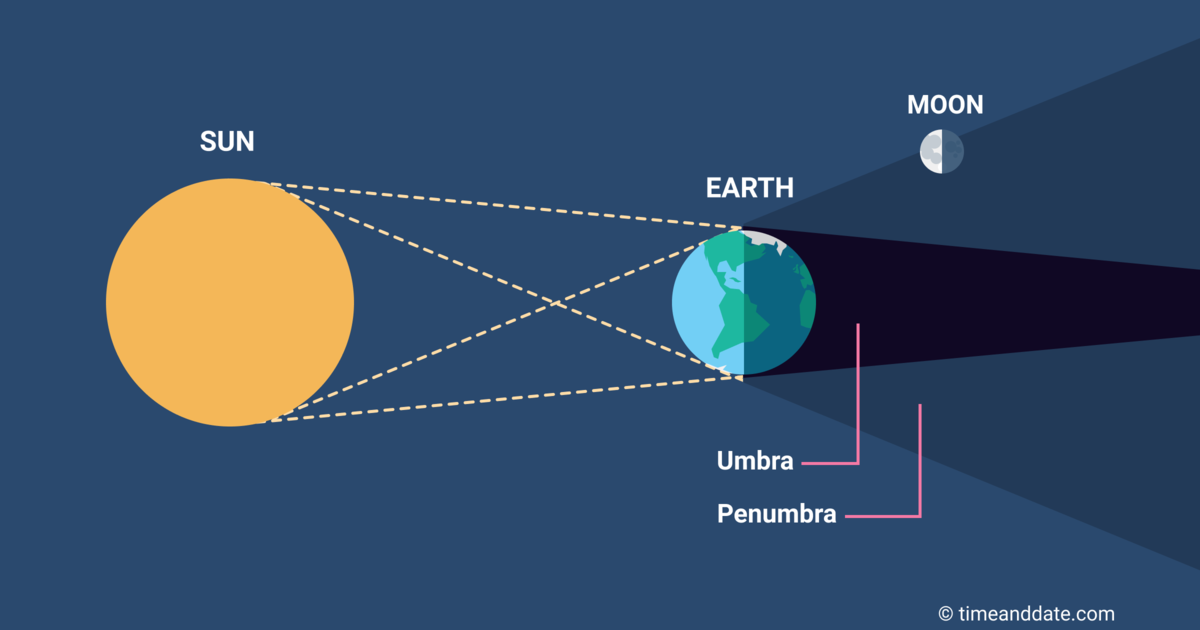


At best, at mid-eclipse, very observant people will notice a dark shading on the moon’s face. The eclipse never progresses to reach the dramatic minutes of totality. There is never a dark bite taken out of the moon, as in a partial eclipse. This third kind of lunar eclipse is much more subtle, and much more difficult to observe, than either a total or partial eclipse of the moon. In a penumbral lunar eclipse, only the more diffuse outer shadow of Earth – the penumbra – falls on the moon’s face. The dark bite grows larger, and then recedes, never reaching the total phase. In a partial lunar eclipse, the umbra takes a bite out of only a fraction of the moon. At mid-eclipse, the entire moon is in shadow, which may appear blood red. In a total eclipse of the moon, the inner part of Earth’s shadow, called the umbra, falls on the moon’s face. There are three kinds of lunar eclipses: total, partial and penumbral. Lunar eclipses happen a minimum of two times to a maximum of five times a year. At such times, Earth’s shadow falls on the moon, creating a lunar eclipse.
#Umbra and penumbra full#
Next penumbral lunar eclipse: July 4-5, 2020Īn eclipse of the moon can only happen at full moon, when the sun, Earth and moon line up in space, with Earth in the middle. Photographed at 2.5 minute intervals and assembled in Photoshop.”

John Ashley wrote in 2017: “The Whipple Observatory’s 6.5-meter telescope on the top of Mount Hopkins, in southern Arizona, eclipses February’s full moonrise Friday evening as the Earth’s shadow (a subtle penumbral eclipse) fades from the upper left portion.


 0 kommentar(er)
0 kommentar(er)
